Ashrama shifted to present premises.
Ashrama shifted to present premises.
In the year 1931, at the instance of the Maharaja His Highness Sri Krishnaraja Wadiayar IV, the City Improvement Trust Board of Mysore gifted two acres of land to the Ashrama. This plot was situated on the outskirts of the city in Vanivilas Mohalla on the Princess Road (now known as K.R.S. Road leading to the famous Krishna Raja Sagar Dam/Brindavan Gardens). Ashrama shifted from the rented house at Weavers’ Lines (now renamed as Krishnamurthipuram).
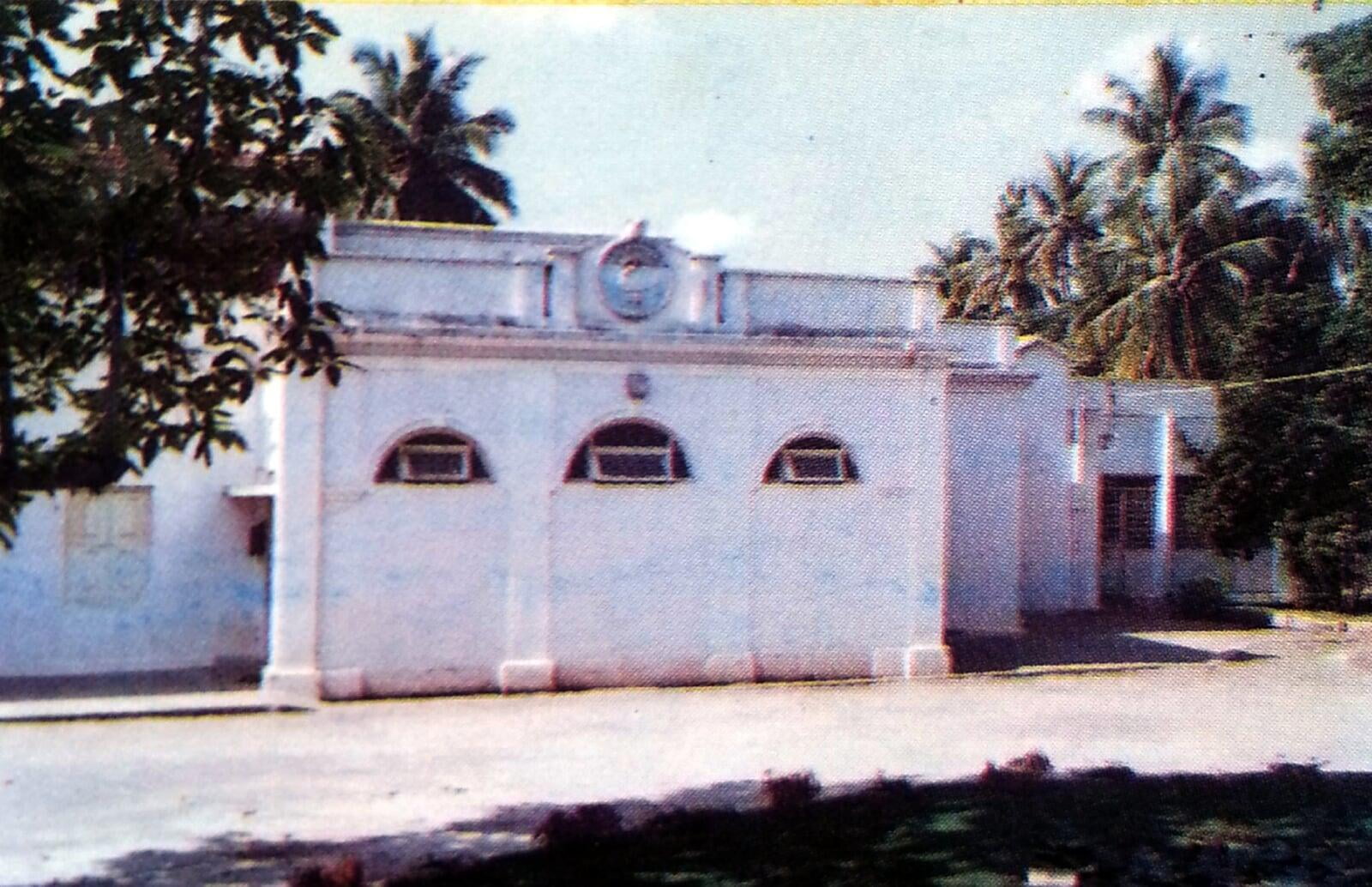
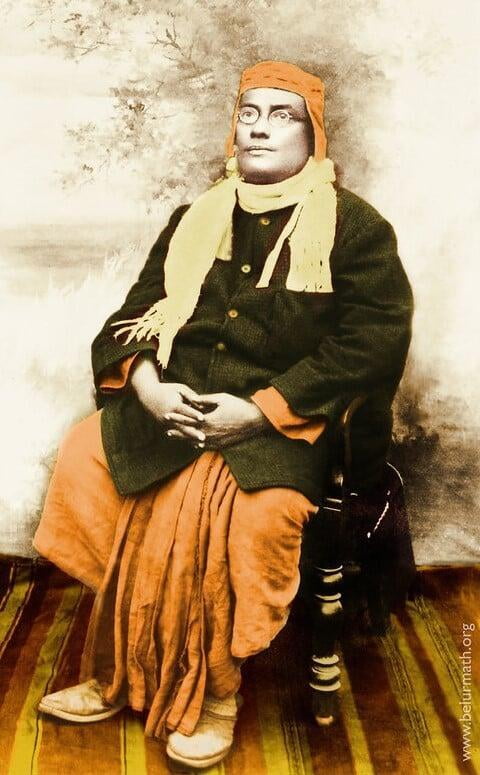
Visit of Most
Rev. Swami Vijnananandaji Maharaj
Visit of Most
Rev. Swami Vijnananandaji Maharaj
In the history of Mysore Ashrama the year 1931 was a landmark year in one more sense . Most Rev. Swami Vijnananandaji Maharaj, a direct disciple of Sri Ramakrishna and the fourth President of the Ramakrishna Order – visited Mysore then. This visit is historic as it was the only visit by any direct disciple of Sri Ramakrishna to the Ashrama premises.
Starting of Study Circle in 1932
In 1932 the Maharaja of Mysore made a grant to start a Vedanta College (Study–Circle) for the Mission Swamijis, to be conducted primarily by Sri V.Subrahmanya Iyer, retired Registrar of the Mysore University and tutor to the Maharaja. Sri Iyer was a Sanskrit scholar and was well trained in scientific thought and Western Philosophy. He was also endowed with a critical mind.”
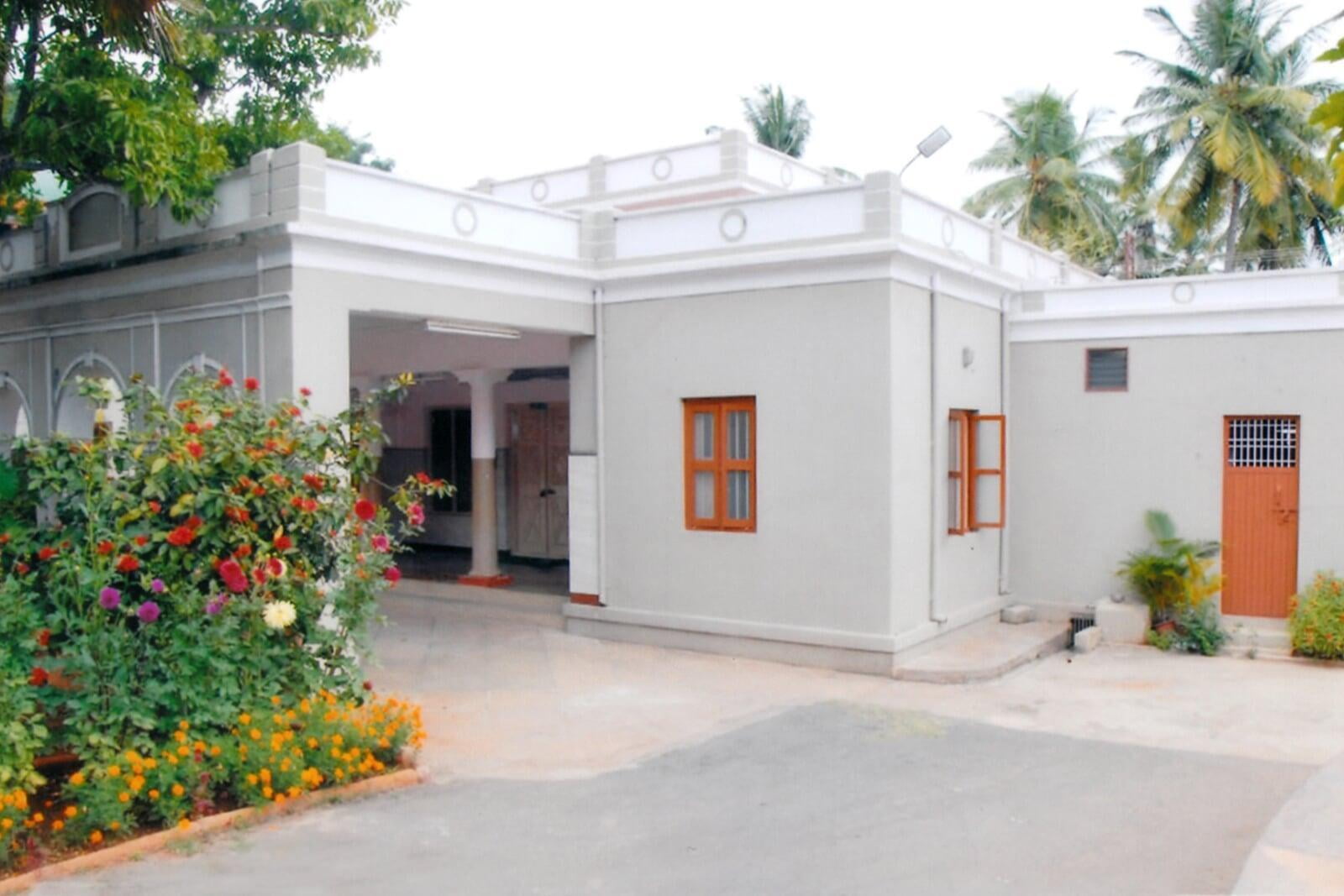
Starting of the Ramakrishna Students’ Home
Consecration of New Temple
Consecration of New Temple
On the morning of Wednesday, 25th October 195020 the new temple of Bhagawan Sri Ramakrishna was consecrated by Srimat Swami Madhavanandaji Maharaj, the General Secretary of the Ramakrishna Math and Ramakrishna Mission. A large number of monks, notably senior monks like Swami Yatiswaranandaji, Swami Vireswaranandaji, Swami Abhayanandaji and devotees participated in the concecration ceremony.
A well designed small gopuram (tower) over the shrine room added subsequently (during the Presidentship of Swami Somanathananda) enhances the grandeur of the temple. A major part of the expenses of the construction of the gopuram was borne by Sri H N Krishna Rao, a devotee.
Sri Ramakrishna Vedanta College
Sri Ramakrishna Vedanta College
Sri Ramakrishna Vedanta College (Vedanta College, for short) was functioning in Bangalore since 1939. The book, ‘A Spiritual CentreBlossoms: Ramakrishna Math, Bangalore, (Revised Edition, November 2007)’ gives a brief account of this College.
In May 1944 Srimat Swami Madhavanandaji Maharaj had suggested Swami Shambhavananda to take the Vedanta College to Mysore. For want of accommodation in Mysore Ashrama then the suggestion could not materialise
RIMSE Inaugurated
RIMSE Inaugurated
The Sri Ramakrishna Vedanta College was re-christened as RAMAKRISHNA INSTITUTE OF MORAL AND SPIRITUAL EDUCATION (RIMSE). After observing all the traditional religious rituals, RIMSE was inaugurated by Srimat Swami Vireswaranandaji Maharaj, the 10th President of the Ramakrishna Order, on Thursday, 23rd May 1974 at six a.m. when he reverentially placed the holy pictures of the Divine Trio at the pedestal of the marble image of Sri Ramakrishna in the prayer hall
Presidents of the Ashrama
| Swamijis | Year |
| Swami Siddeshwaranandaji | |
| Swami Iswaranandaji | |
| Swami Deshikanandaji | |
| Swami Pranaveshanandaji | |
| Swami Shambhavanandaji | |
| Swami Somanathanandaji | |
| Swami Sureshanandaji | |
| Swami Atmavidanandaji | |
| Swami Nityasthanandaji | |
| Swami Muktidanandaji | |
| Swami Atmajnananda | |
| Swami Muktidanandaji |
PROFILES OF THE PRESIDENTS / ADHYAKSHAS OF MYSORE ASHRAMA
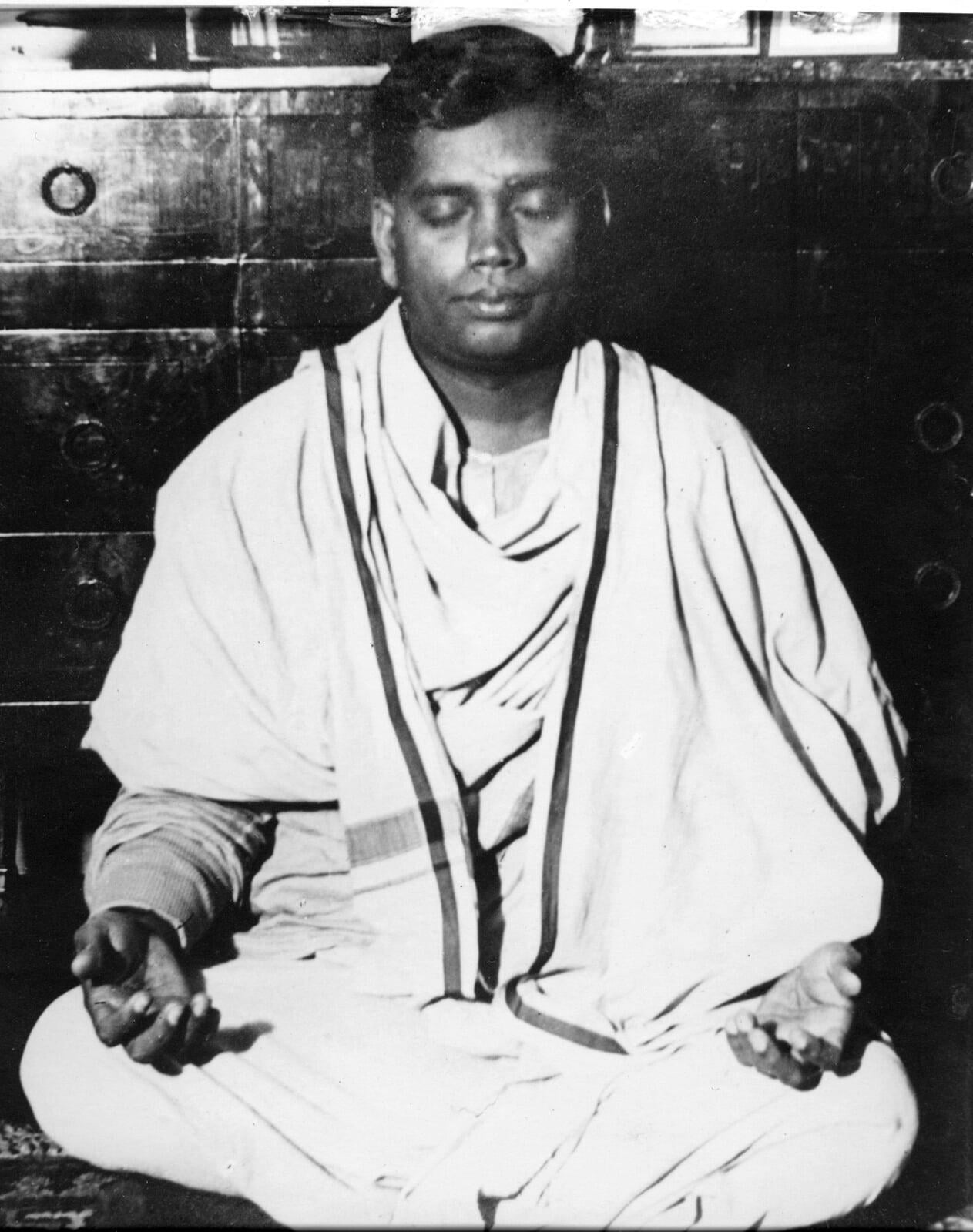
Swami Siddeshwaranandaji Maharaj
Born at Trichur in Kerala in the Royal family of Cochin, Swami Siddheshwarananda (premonastic name, Gopal), was inspired by the lives of Sri Ramakrishna and Swami Vivekananda even as a student in school. His father Sri Ravi Varma Thampuran later became the Maharaja of Cochin.
As a student of Presidency College, Madras (now, Chennai), Gopal along with Sri V K Krishna Menon, another spiritual aspirant from Trichur and a college-mate who later became Swami Tyagishananda, frequented Sri Ramakrishna Math, Mylapore, Madras. On the birth day of Sri Ramakrishna in 1917 he was initiated with the Holy Mantra Diksha by Srimat Swami Brahmanandaji Maharaj, the President of the Ramakrishna Order. Three years later, on 19 April 1920, Gopal joined the Ramakrishna Order at Madras Math. The very next year Gopal blessed with the Brahmacharya Diksha (the first monastic vows) from his Diksha Guru and became Brahmachari Vishuddha Chaitanya (Viveka Prabha; February 2022; p.16). For some time Gopal Maharaj was the Editor of The Vedanta Kesari, the Spiritual English Monthly magazine of the Ramakrishna Order, published from Madras Math. In 1924, Gopal Maharaj was ordained into Sannyasa by Srimath Swami Shivanandaji Maharaj, the second President of the Ramakrishna Order. Gopal Maharaj got his Sannyas name as Swami Siddheshwarananda.
When Sri Ramakrishna Ashrama was established in Mysore on 11 June 1925 by Swami Sharvananda, Head of Madras Math, Swami Siddheshwarananda was made its first President. Until then the latter was assisting the former in Madras Math. During his nine years of his stay in Mysore, Swami Siddheshwarananda was instrumental in initiating several service activities, including the rural welfare work in the villages around the city. A distinct and a noble act of the Swami was identifying the future Kannada celebrity K V Puttappa and sheltering him in the Ashrama when the young college-student was sick. This youth who stayed more than a decade in the Ashrama became a celebrated Kannada scholar and a writer, and the recipient of the prestigious National Award, the Jnanapith Award. Puttappa who retired as the Vice-Chancellor of UoM remained ever grateful to Sri Ramakrishna Paramahamsa and to Swami Siddheshwarananda’s motherly care.
The Ashrama Centre at Gretz is a standing monument for the Swami’s sincere labours for the spread of Vedanta in the region and in Europe. Despite his delicate health Swami Siddheshwarananda was an indefatigable worker and was greatly admired and universally loved for his qualities of head and heart. Everywhere, in Mysore, Bangalore, Madras, in France…the Swami left behind lasting impressions among the scholars and the laity.
Swami Siddheshwarananda passed away at Gretz in April 1957 after suffering from heart attack. The blessed Swami was conscious till the end. He was 59.
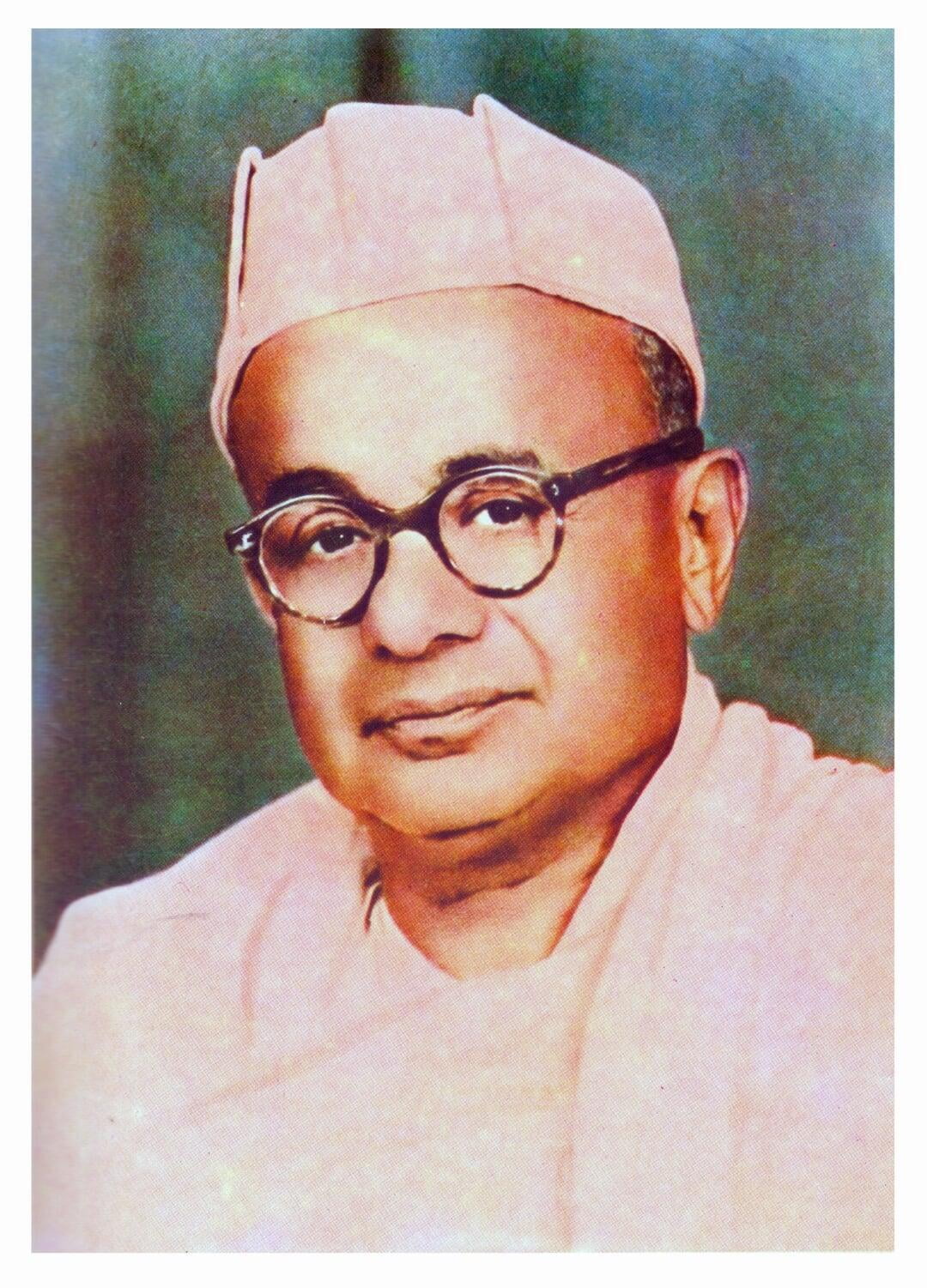
Swami Shambhavanandaji Maharaj
Swami Shambhavananda (pre-monastic name Chengappa) was born at Halagunda Village (South Coorg) in the Telepanda family. After his early education in Virajpet, Telepanda Chengappa studied in Bangalore at St. Joseph’s High School and later in St. Joseph’s college. Inspired by the lives of Sri Ramakrishna Paramahamsa and Swami Vivekananda, Chengappa joined the Ramakrishna Order in 1920, at Sri Ramakrishna Ashrama (now, Ramakrishna Math), Basavanagudi, Bangalore. The young probationer was blessed to be initiated with the Holy Mantra Diksha and later receive the formal Brahmacharya Diksha by Swami Brahmanandaji Maharaj. In the year 1924 Brahmachari Chengappa was ordained into Sannyasa (the final monastic vows) on the birth day of Swami Vivekananda. Chengappa was given his Sannyasa name, ‘Swami Shambhavananda.’
When Swami Nirmalanandaji laid the foundation stone for a branch centre of the Ramakrishna Order, at Ponnampet, he placed Swami Shambhavananda as in-charge of the construction work of the Ashrama. Later, when the Ashrama centre (named as Sri Ramakrishna Sharadashrama) was inaugurated (1927) by Swami Nirmalanandaji, he appointed Swami Shambhavananda as its first President. In line with the inspiring call of Swami Vivekananda, the Swami went on foot from village to village carrying a magic lantern, a map etc., to educate the illiterate villagers on the measures to be adopted to eradicate malaria that was rampant in the region.
wami Shambhavananda’s second creditable activity to boost the financial status of the local honey-tappers/ bee-keepers was the establishment of the Coorg Honey and Wax Marketing Co-Operative Society, Ltd., at Virajpet, to produce and market quality honey, extracted on scientific methods. In this the Swami was was a pioneer in successfully bringing the co-operative sector into a rural sector in Coorg district, as early as 1936.
Swami Shambhavananda was posted as the President of Sri Ramakrishna Ashrama, Mysore in 1941 where he was instrumental in a number of expansion activities- all beneficial to society. The elegant temple of Sri Ramakrishna with a prayer-cum- lecture hall, the development of the Publication Department, and the establishment of two premium residential educational institutions Sri Ramakrishna Vidyashala and Ramakrishna Institute of Moral and Spiritual Education, were all due to the undaunting spirit and farsightedness of the visionary monk.
In 1965, Swami Shambhavananda became a Trustee of the Ramakrishna Math and a member of the Governing Body of the Ramakrishna Mission.
This much respected monk who lead a simple, exemplary austere monastic life and who was known for his discipline, punctuality, dexterity and thoroughness in his approach suffered from coronary problems towards his last days.
Swami Shambhavananda passed away at Mysuru Ashrama on 26 February 1972. He was 78. The Ashrama Centres at Ponnampet and Mysuru owe a lot to him.

Swami Somanathanandaji
Born in 1912 Shamanna (later Swami Somanathananda) had his early education in a rural school at Huliyuru Durga. He continued his later education in Mysore. While studying in intermediate class (today’s XI and XII Standard Class) in the Government College there, Shamanna came in contact with Sri Ramakrishna Ashrama. He was fortunate to meet Srimat Swami Vijnananandaji Maharaj, one of the direct disciples of Sri Ramakrishna when he visited Mysore in 1932 and spent a day in the Ashrama.
Inspired by the life and message of Sri Ramakrishna and Swami Vivekananda Shamanna left home and joined the Ramakrishna Order at Madras Math in 1932.
Brahmachari Shamanna was blessed to receive the Holy Mantra Diksha from Srimat Swami Shivanandaji Maharaj and later in 1943, was ordained into Sannyasa by Srimat Swami Virajanandaji Maharaj and became Swami Somanathananda. Besides his joining Centre the Swami served in two more centres, Ponnampet and Mysuru.
The uniqueness of the Swami was his service in Mysuru Centre for about 55 years at a stretch full of contentment and smile. He was the Head of Mysuru Centre from 1972 to 1991. The Swami retired from active life (1991) but continued to stay in Mysuru Ashrama till his passing away in 1997.
Swami Somanathananda was a gifted speaker both in Kannada and English on the Ramakrishna-Vivekananda literature and on Vedanta. He was a prolific writer in Kannada excelling in discussing the intricate points found in scriptures in easily comprehensible style. His masterpiece books ‘Upanishad Bhavadhare’;‘Gita Bhavadhare’ have been received well even by common people. He translated into Kannada all the volumes of Complete Works of Swami Vivekananda. Besides these the Swami wrote many books and articles in Kannada and translated into Kannada a number of books that have enriched the Ashrama literature and Scriptures. His first book in Kannada, Sri Sarada Devi was written while he was an assistant monk at Ponnampet Ashrama. A significant feature worth noting is that many of his books don’t bear his name! True to the words of Swami Vivekananda, silent work was more important for the Swami, than name-making.
Amidst all his busy schedule, Swami Somanathananda scrupulously adhered to the monastic austerities like japa and meditation at set hours. He was loved and respected for his simplicity, punctuality, detachment and exemplary monastic life. A number of spiritual aspirants were inspired by these noble qualities of the Swami and a few of them embraced monasticism both in Ramakrishna Math and at Sri Sarada Math.
During the last days of his exemplary monastic career Swami Somanathananda suffered from oral cancer. A notable point is despite the excruciating pain and suffering the Swami blessed by the Holy Trio to be totally detached and was quiet and calm.
Swami Somanathananda passed away on 16 September 1997. He was 85.
🕉️ Historical Timeline of Sri Ramakrishna Ashrama, Mysuru
1892 – Swami Vivekananda’s Visit
Swami Vivekananda visited Mysuru, stayed at Niranjana Math, and met the Maharaja—planting seeds for the future Ashrama.
1925 – Ashrama Established
Founded by Swami Siddheswarananda under the inspiration of Swami Brahmananda in a rented house at Weavers' Lines.
1931 – Relocation to Yadavagiri
Moved to present location with 2 acres of land granted by Maharaja Krishnaraja Wadiyar IV.
1931 – Visit by Swami Vijnanananda
Visit by a direct disciple of Sri Ramakrishna and the 4th President of the Order.
1932 – Vedanta Study Circle
Initiated for systematic scriptural studies and discussions for spiritual aspirants.
1953 – Sri Ramakrishna Vidyashala
A value-based residential school established for holistic education of boys.
1974 – RIMSE
Ramakrishna Institute of Moral and Spiritual Education founded for youth and teacher development.
2000 – ‘ವಿವೇಕಪ್ರಭ’ ಕನ್ನಡ ಮಾಸಪತ್ರಿಕೆ (Viveka Prabha Magazine)
Viveka Prabha Kannada monthly magazine started from 01.01.2000.
2000 – Viveka Shikshana
ವಿವೇಕ ಶಿಕ್ಷಣ, a special support free education programme targeting the school going youngsters living in the backward areas of the city.
2020 - Pandemic Response
During the COVID-19 pandemic, the Ashrama provided essential services, relief materials, and spiritual support to the community. Online spiritual discourses were conducted regularly.
2025 – Centenary Celebrations
100 years of spiritual, educational, and social service, including the development of Viveka Smaraka.

